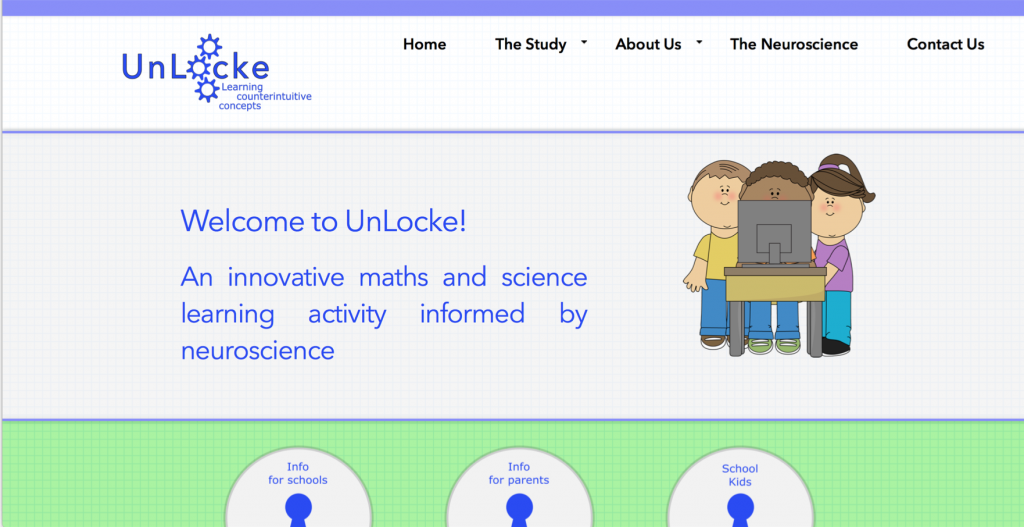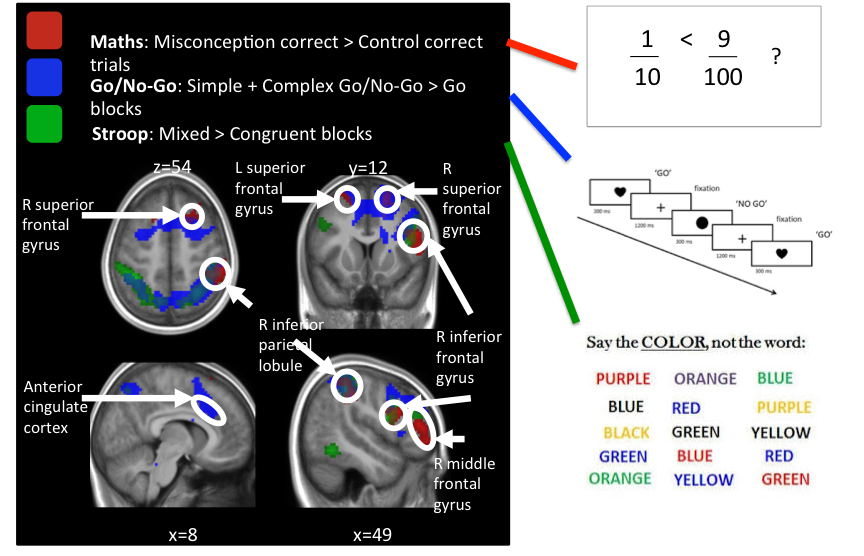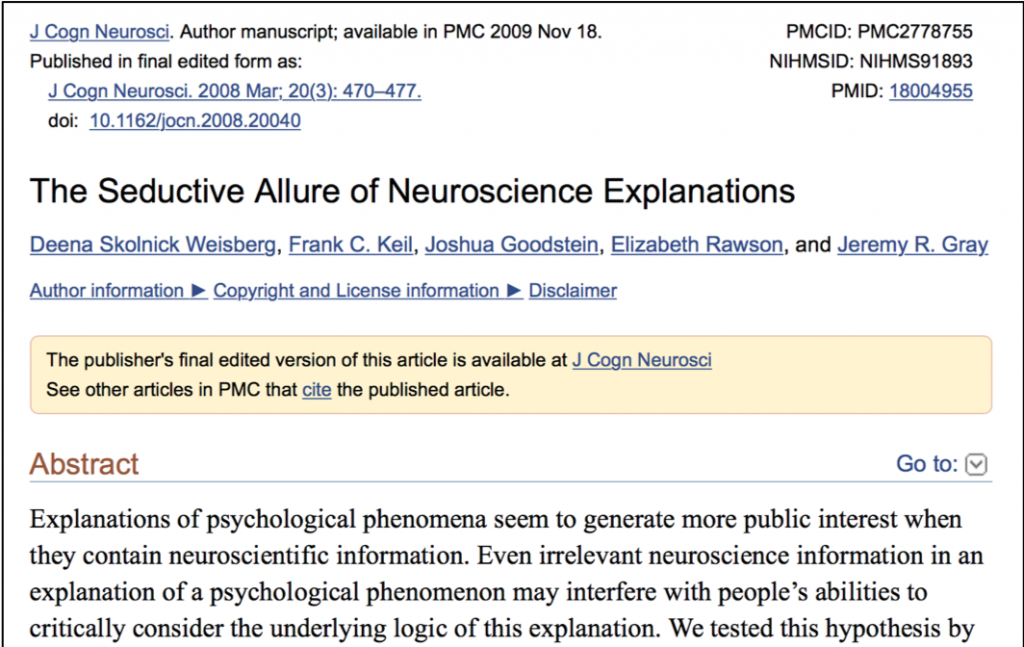Blog written by Prof. Michael Thomas for the HMC (Headmasters’ and Headmistresses’ Conference) introducing educational neuroscience.
If you’re of a nervous disposition, it’s not a good time to read the news. Even the technology pages, once a place of respite, now tell us that artificial intelligence is a danger, at risk of taking over the world, or at the very least, stealing our jobs. Its powerful learning algorithms can sift through mountains of data to log our every move.
Are computers now better at learning than humans? How much do we now know about human learning itself, given our greater understanding of how the brain works? And are these insights of use to educators?
Educational neuroscience is a scientific field that seeks to address these questions, by bringing together researchers from neuroscience, computer science, psychology, and education to explore how new insights into brain mechanisms of learning can inform educational practice (see https://impact.chartered.college/article/brookman-byrne-neuroscience-psychology-education/).
Human learning is (trusting somewhat in evolution, here) well adapted to the natural environments we have found ourselves in, but it nevertheless appears somewhat idiosyncratic when applied to education. Consider these questions:
- Why am I liable to forget that the capital of Hungary is Budapest, but not forget that I’m afraid of spiders?
- Why do I find I have learned things better after a good night’s sleep?
- Why does my mind go blank when I’m stressed in an exam?
- When I became a teenager, why did I sometimes do stupid, occasionally dangerous things just to impress my friends?
- Why can I learn a new language so much more easily when I’m 5 years of age than when I’m 50?
If one were designing a machine to learn (of the sort intended to one day take over the world), one could imagine designing it without any of these properties. For example, the machine could store Capitals-of-European-Countries and Animals-I’m-Scared-Of as similar types of memories, and it need not forget either. One could build the machine without emotions like ‘stress’ or ‘anxiety’, which on the face of it seem to detract from human learning performance. And, battery life permitting, one could build a machine that didn’t need to sleep to achieve efficient learning. The reason why humans show these particular idiosyncrasies in learning lies in the particular way our brains work, because of its particular biological origins.
Educational neuroscience as a field is still in its early days. It is building a foundation of basic science of neural mechanisms of learning. One place to start is to understand the reasons why some of the best methods that teachers use are indeed so effective. Perhaps there will also be insights that offer new techniques to teachers.
The field is not without risks. The complexity of learning in the brain and the state of current scientific knowledge mean that there is a risk of premature translation before the foundation is established. The risk is heightened by the legitimate desire of policymakers to use scientific evidence to inform their education policies, the enthusiasm that educators have to inform their teaching with insights into how the brain works, and the desire of commercial companies to sell new techniques to schools using the latest neuroscience findings merely as window dressing (for some fun reading, see http://www.educationalneuroscience.org.uk/resources/neuromyth-or-neurofact/).
Nevertheless, projects are underway to evaluate new potential teaching techniques based on neuroscience insights (see http://educationendowmentfoundation.org.uk/news/new-research-to-investigate-if-neuroscience-can-improve-teaching-and-learni/). And the science of learning is far enough progressed to begin to draw a broad picture for teachers relevant to the classroom (e.g., https://impact.chartered.college/article/howard-jones-applying-science-learning-classroom/, https://www.amazon.co.uk/Neuroscience-Teachers-Applying-research-evidence/dp/1785831836).
I’ll give an example of the kind of work currently underway in my research centre, the Centre for Educational Neuroscience (http://www.educationalneuroscience.org.uk/). The UnLocke project (http://unlocke.org/) was inspired by the observation that learning in maths and science sometimes involves inhibiting prior beliefs or direct perceptual information. For a child to learn that the Earth is round requires inhibiting or suppressing his or her previous experience that it seems to be flat (at least when you play football on it). Experts in science and maths get better at inhibiting prior knowledge rather than overwriting prior concepts with new ones.
The fact that we can visualise the brain operating with modern scanning methods provides key insights here, because it’s hard to see people inhibiting knowledge in their overt behaviour. Inhibition is the brain stopping us doing things. We know the sorts of tasks that require inhibition. Say you’re shown a sequence of cards that either have a heart shape or a circle on them, and you’re asked to press a button onlywhen the heart appears. The sequences of cards flashes up, you’re ready to press the button, but if the circle appears, you have to stop yourself from pressing the button. Or say you’re shown a series of colour names (BLUE, RED, GREEN) printed in different coloured text, and you’re told to name the colour of the text, not name the colour word. It’s so easy to name the colour word, you want to say the colour word … but you have to stop yourself, and name the text colour instead. We can see regions at the front of the brain working harder in a functional magnetic resonance imaging scan when adolescents are asked to do these tasks (see below). Annie Brookman-Byrne, a PhD student at Birkbeck College, asked the same teenagers to solve counter-intuitive maths problems while in the scanner. They might be asked, is one tenth less than nine hundreds? The answer is YES, but part of you wants to respond NO, because the numbers in nine hundreds are bigger. When Annie analysed the results, she found the same inhibitory brain areas become active in solving the counter-intuitive maths problems as when stopping pressing buttons or reading colour names.
Taken from: Brookman, A., Tolmie, A., Mareschal, D., & Dumontheil, I. (2016). Science and maths reasoning and inhibitory control in adolescence: An fMRI study. Poster presented at IMBES conference; Toronto, Canada.
It’s one thing to gain insights into the brain mechanisms involved in learning maths and science, another to make suggestions about how this may translate to the classroom. Insights must be transformed by pedagogical principles into learning techniques that may be useful for teachers in the classroom, which in turn must be evaluated for their effectiveness by behavioural trials.
In this way, the UnLocke team have design a computer-based learning activity for use in science and maths classes to encourage 8 and 10-year-old children to ‘stop and think’ when they are reasoning about maths and science problems, and we are currently evaluating its effectiveness in 90 schools around the country (https://educationendowmentfoundation.org.uk/projects-and-evaluation/projects/learning-counterintuitive-concepts).
A word of warning. Don’t believe in a teaching method just because there’s a brain image next to it! (see https://www.ncbi.nlm.nih.gov/pmc/articles/PMC2778755/).
Educational neuroscience is part of an evidence-based approach to education, which means you should believe nothing until you see evidence that a teaching technique really works. In this case: that improving kids’ inhibitory control skills when thinking about maths and sciences problems will improve their end of year performance on science and maths tests! Keep your eyes peeled for the results of our study.
Meantime, back to killer robots…




